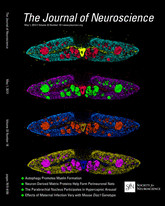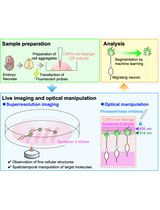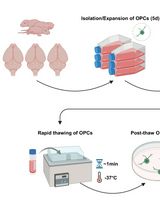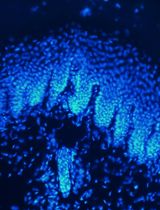- EN - English
- CN - 中文
NMDA-induced Excitotoxicity and Lactate Dehydrogenase Assay in Primary Cultured Neurons
原代培养神经细胞中的NMDA诱导兴奋毒性和乳酸脱氢酶试验
发布: 2013年11月05日第3卷第21期 DOI: 10.21769/BioProtoc.965 浏览次数: 12161
评审: Xuecai Ge
Abstract
N-Methyl-D-aspartic acid receptor (NMDAR)-mediated excitotoxicity is thought to contribute to the pathogenesis of a large number of chronic neurodegenerative disorders (such as Alzheimer’s and Huntington’s diseases to mental illnesses) in addition to acute brain insults such as stroke and brain trauma. Understanding the mechanisms underlying NMDAR-mediated excitotoxicity may lead to development of novel therapeutics for treating neurological diseases. Stimulation of primary cultured neurons with excessive NMDA is widely used as an in vitro model for studying NMDAR-mediated excitotoxicity, which allows careful dissection of the detailed cellular mechanisms underlying excitotoxic neuronal death.
Lactate dehydrogenase (LDH) is a cytoplasmic enzyme which can convert NAD into NADH. LDH is released from cells into culture medium when the plasma membrane integrity is compromised. Therefore, the amount of released LDH represents the degree of cell death. In our current study, the extracellular LDH level was measured using an in vitro Toxicology Assay Kit obtained from Sigma-Aldrich. The basis of this LDH assay is: 1) LDH reduces NAD into NADH, 2) the resulting NADH is then utilized in the stoichiometric conversion of a tetrazolium dye, and 3) the resulting colored compound is measured by a spectrophotometric microplate reader at a wavelength of 490 nm. The cell death rate was expressed as a percentage (%) between the absorbance of treated group and that of control group.
Materials and Reagents
- Primary cultured neurons
- NMDA (Sigma-Aldrich, catalog number: M3262-25MG )
- Neurobasal medium (Life Technologies, Invitrogen™, catalog number: 21103 )
- LDH Assay Substrate Solution
- LDH Assay Dye Solution
- LDH Assay Cofactor Preparation
- In vitro Toxicology Assay Kit (Sigma-Aldrich, catalog number: TOX-7 )
Equipment
- 37 °C, 5% CO2 Cell culture incubator
- 96-well plate (Sigma-Aldrich, catalog number: SIAL0596-50EA )
- Spectrometer for 96 well plate that can measure 490 nm and 690 nm (Molecular Devices, model: SpectraMax M2e Multi-Mode Microplate Reader)
Procedure
文章信息
版权信息
© 2013 The Authors; exclusive licensee Bio-protocol LLC.
如何引用
Readers should cite both the Bio-protocol article and the original research article where this protocol was used:
- Zhang, S. and Wang, Y. T. (2013). NMDA-induced Excitotoxicity and Lactate Dehydrogenase Assay in Primary Cultured Neurons. Bio-protocol 3(21): e965. DOI: 10.21769/BioProtoc.965.
-
Zhang, S., Taghibiglou, C., Girling, K., Dong, Z., Lin, S. Z., Lee, W., Shyu, W. C. and Wang, Y. T. (2013). Critical role of increased PTEN nuclear translocation in excitotoxic and ischemic neuronal injuries. J Neurosci 33(18): 7997-8008.
分类
神经科学 > 细胞机理 > 细胞分离和培养
细胞生物学 > 细胞活力 > 细胞死亡
细胞生物学 > 细胞染色 > 蛋白质
您对这篇实验方法有问题吗?
在此处发布您的问题,我们将邀请本文作者来回答。同时,我们会将您的问题发布到Bio-protocol Exchange,以便寻求社区成员的帮助。
Share
Bluesky
X
Copy link












